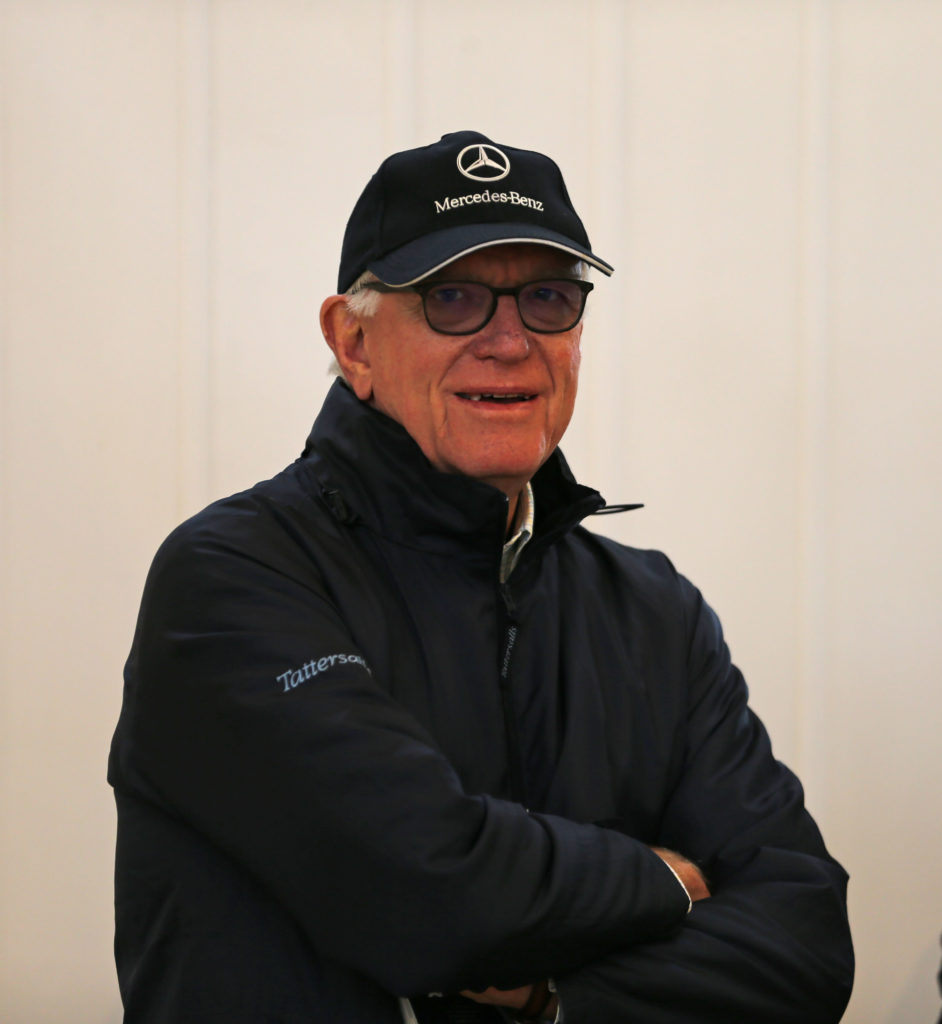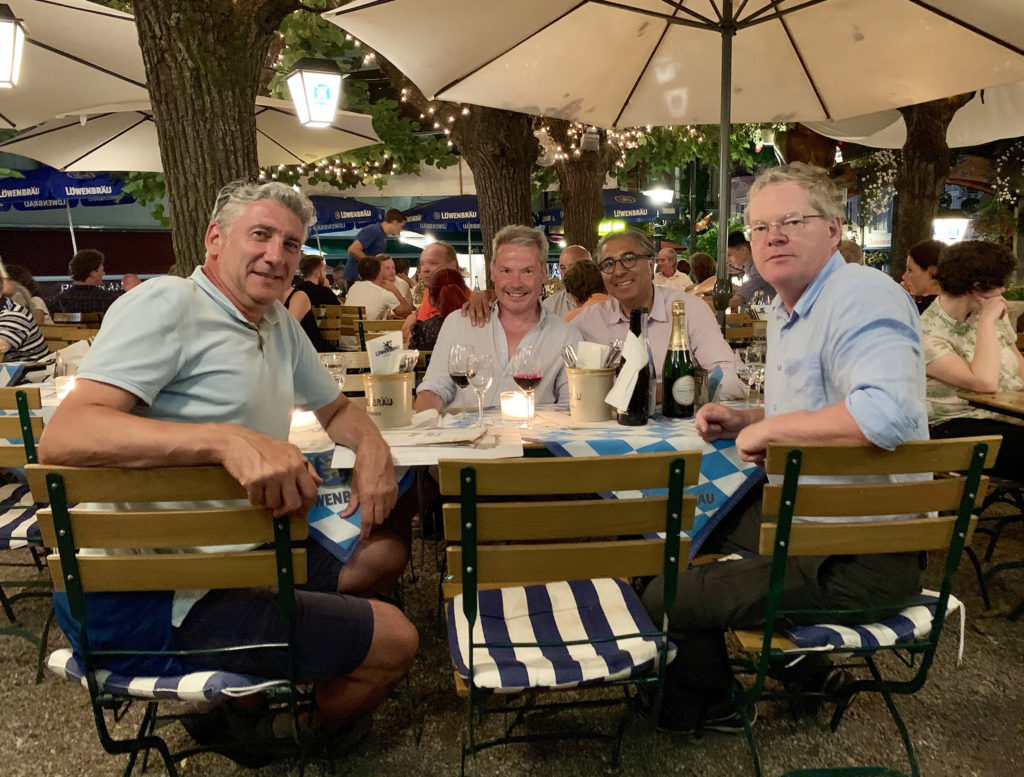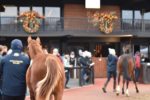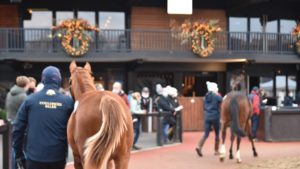Vow And Declare’s Melbourne Cup victory of 2019 was greeted with a silent sigh of relief by many in the Australian racing and breeding industry: a local horse, bred locally, and trained by a local trainer. Of the previous nine winners of the race, only Prince Of Penzance had been bred relatively nearby – in New Zealand – with the rest hailing from Britain, Ireland, France, Germany and America.
Stabled next to Vow And Declare in Danny O’Brien’s stable at that time was a neat colt, judged to be aged three by southern hemisphere time, but in fact still a two-year-old, bred in Ireland and bought for 120,000gns at Book 1 of Tattersalls’ October Yearling Sale. Russian Camelot had caused quite a stir on his winning debut at Ballarat the previous month owing to the fact that he was approximately six months younger than his 11 rivals, but had trounced them pretty readily.
The hype surrounding the Camelot colt grew, and not without some justification. This May he made history by becoming the first northern hemisphere- bred to win a Derby in Australia when landing the Group 1 South Australia Derby at Morphettville. While Russian Camelot is by no means the first horse bred in Europe who has gone on to great success down under after being exported as a yearling – treble Melbourne Cup winner Makybe Diva is the dazzling trailblazer in this field – he can be seen as having ignited a trend.
For more than a decade, Australian buyers have been increasing in numbers at the horses-in-training sales in pursuit of staying horses who might once have been purchased domestically to continue their careers under National Hunt rules. The competition for these types, at public auction and by private transaction, has risen along with the prices. At the same time, trying to sell a yearling with a middle-distance pedigree but without a ‘Book 1’ page has become harder. But as the form horses became prohibitively expensive for some buyers, a strategy rethink was required, and it is one which has given a boost to the market for middle- distance yearlings.
Russian Camelot was one of two plucked from the 2018 October Sale by Jeremy Brummitt for Danny O’Brien. The following year O’Brien took charge of another six European yearlings, and this season the duo has bought ten. And they are not the only ones trawling the European yearling sales with an eye on the Australian export market. In 2020, around 30 yearlings bought across the European sales have headed south.
“It all started a long time ago when we brought Makybe Diva out here as a yearling”
The Australian agent John Foote can be seen as a pioneer in this regard. He bought Makybe Diva’s dam, the Juddmonte-bred Tugela, from Ballylinch Stud back in 1998 when she was carrying the future superstar.
“It all started a long time ago when we brought Makybe Diva out here as a yearling,” Foote recalls. “Then in about 2011, Sandy McGregor, an owner in Melbourne, approached me about buying racehorses. They started to get very expensive so I suggested we might buy a yearling or two. He got Gerry Ryan involved and I bought them a horse called Signoff.”
Bought for 75,000gns from Book 2, Signoff, a son of Authorized, ended up finishing fourth in the Melbourne Cup and has a brace of Group 3 wins to his credit.
Subsequent yearling purchases by Foote include Group 1 Australian Cup winner Fifty Stars, who is now a five-time Group winner, and Listed winner Furrion. Like Signoff, these two are also sons of Derby winners, respectively Sea The Stars and Camelot.
“I actually got away with it for a few years and then Russian Camelot came along and he has really captured everyone’s imagination,” says Foote.

John Foote: seen as a pioneer in this market – Photo: Tattersalls/Laura Green
“Fifty Stars is probably as good a horse as him, he’s certainly a very tough horse, but he didn’t capture the imagination. But that’s fine because it meant I was able to do it for a few years without anyone else getting involved.”
In recent weeks there has been some criticism in the Australian racing press regarding the “fly in-fly out” European challengers for the Melbourne Cup following the tragic fatal injury of Derby winner Anthony Van Dyck during this year’s race. Some of the commentary has focused on the idea that horses from this part of the world are used to training and racing on more forgiving surfaces and that their bones have not been suitably conditioned to compete on the harder tracks often encountered in Australia. This, of course, overlooks the fact that the first three home this year – Twilight Payment, Tiger Moth and the marvellously consistent Prince Of Arran – all flew in for the race. Furthermore, the sixth-placed Sir Dragonet, another son of Camelot, had won the Cox Plate on his first Australian start having been in the country for a matter of weeks.
Despite the faint whiff of sour grapes from some of the critics, there is no doubt that there are benefits to be found from a proper settling-in phase for horses being imported to Australia, whether as yearlings or later in their careers.
“Some people who have brought the racehorses out here have said they’ve had an issue,” Foote says. “That’s one of the reasons I decided to bring them out straight after the yearling sales. That way you settle them in, get them acclimatised and get them used to our regime and our harder tracks, let them go shin-sore a few times before they race. That’s why we decided to do that and I’m pleased we did.”
Danny O’Brien certainly sees no disadvantage in incorporating these youngsters into his training operation, particularly as they are not bred to be early two-year-old types.
“They go straight from the sale grounds into quarantine so they do two weeks there and another two weeks once they reach Australia,” he explains. “We break them in straight away, usually around the middle of November, and we’ve found that they break in really well. They are getting out of the cold in Europe and coming into our summer, which they seem to appreciate, and then we just treat them like any other horse. We’re only just into it – Russian Camelot was the first one of the first year and we were probably surprised by how early he raced but, having said that, he effectively raced as a late-season two- year-old in his own hemisphere.”
“It meant I was able to do it for a few years without anyone else getting involved”
Australian agent Brad Spicer is another who has started to dip his toe into the European yearling market and, even though the Coronavirus pandemic prevented him from travelling this year, he was still active through his partnership with British agent Alex Elliott.
“It’s been really hard not being able to get there and to see the horses but I’m just so glad that I’ve been doing it for a couple of years so I know the process,” says Spicer. “I’ve had a lot of discussion with vets and their thought is to get them out to Australia and get them to throw a bit more bone so it hardens them up for when they’re ready for racing. I think there’s a lot in that, getting them here, conditioned and ready to go pretty much as four-year-olds.”
Spicer’s purchases in the last three years have also been the offspring of Derby winners. He picked up two Camelot colts last year following two by Sea The Stars and his German Derby-winning son Sea The Moon in 2018. Through Elliott, another son of Camelot was bought from this year’s Orby Sale, along with a colt by Sir Percy at Tattersalls, both out of Shamardal mares.
He adds: “To be able to buy the stock of good middle-distance sires like Sea The Stars and Camelot, I think it’s the way to go for the future. I’m also a massive fan of Shamardal.”

The successful Quantum Leap Racing team are assisted by Jeremy Brummitt (right) – Photo: Emma Berry
At £160,000 and 150,000gns respectively, Spicer’s two latest European yearling recruits could still be deemed expensive but not when set against the record-breaking price of 925,000gns paid in October at Tattersalls for the Australian-bound English King – yep, you’ve guessed it, another son of Camelot. Plus there’s the bonus of the lively syndication market in Australia.
“We pretty much have investors before we go to the sales so they’re spoken for before we buy them,” Spicer notes. “The prize-money makes it a bit easier over here and a lot of the staying races are worth a lot of money. You do need to get a bit of return to the owners in some shape or form.”
And therein lies the gravest of problems facing British racing: the scant return to the majority of owners. This is nothing new, of course, but racing being forced to operate behind closed doors during the Covid-19 crisis has only exacerbated an already troubling scenario. A number of operators in the British market have reacted to this in pragmatic fashion by buying middle- distance yearlings with a view to racing them here in the early stages before attempting to sell them overseas. A case of ‘have your cake and eat it’, up to a point.
One such group of investors is behind Quantum Leap Racing, run by Eamonn O’Connor, which, like O’Brien, uses Jeremy Brummitt as their agent. Brummitt was also responsible for buying English King as a yearling for owner Bjorn Nielsen.
“Over and above everything I’d like to win the Derby,” says Brummitt, who came close this year when English King started second-favourite at Epsom. “And it seems if you make a good fist of it but come up short you’ve got a very valuable commodity to sell abroad, or indeed to National Hunt racing.”
Beyond the issues prompted by the apparent inadequacies of the Australian breeding programme, not to mention the increasing focus on speed- orientated stallions in Europe, Brummitt also has concerns regarding the future engagement of fans.
He adds: “In my view, we are in a dangerous place. In order to prosper in any racing jurisdiction you need durable, recognisable horses. People like horses that keep running because that’s the way to make the horse a hero and to create new fans. If you retire them after three runs, or they break down after five, then you are not going to connect with the general public. They can make a lot of money for shrewd operators in the business but it doesn’t advance our sport. Regardless of what the breeding professionals in Australia say about the demand for sprinters, that’s an industry- driven demand not a consumer-driven demand. The general public in Australia is focused on the Melbourne Cup, not the Golden Slipper.
“Venture capitalists think they can select a stallion that will win the Golden Slipper so they can sell shares in him, but that’s got nothing to do with cementing or enhancing the popularity of the business. Neither has trying to win the Windsor Castle Stakes instead of the Derby. The by-product of a failed Derby adventure is a horse that might race for five years and fill November Handicaps and Ebors.”
“To be able to buy the stock of good middle-distance sires like Sea The Stars and Camelot, I think it’s the way to go for the future”
Ralph Beckett, former trainer of the 100-rated Wyclif, who has been partially sold by Quantum Leap Racing to continue his career in Australia with Danny O’Brien, also operates for another race-and-sell venture, The Lucra Partnership, set up by Alex Elliott. That outfit’s first syndicate of two-year-olds has started successfully as it contained New Mandate, who was sold on to Marc Chan after winning a Sandown nursery and then went on to win the Flying Scotsman and Royal Lodge Stakes.
“Ralph has always taken a longer-term approach,” says Elliott. “We just found that buying that type of horse, there’s a much better chance of resale. We’ve had a few horses along the way like [Further Flight Stakes winner] Mount Mariah, whose owner turned down a lot of money for him, and Skymax, who we sold to clients with an Australian angle at the end of his two-year-old year.”
He continues: “The way life has gone in general people have just become less patient, but if you can have a little patience with horses it stands you well. If the horses just miss the Australian ticket you can get your money back to go jumping. Say if you did a Royal Ascot syndicate and you raised X amount to buy five two-year-old types, for a start they would be hard to buy, and if they just missed they’re basically worthless.”
Elliott adds: “We didn’t expect New Mandate to be as fast as he is – he’s by New Bay out of an Authorized mare – but it’s an added bonus that he did so well
at two.”
With the prize-money situation in Britain unlikely to improve in the near future, it is entirely understandable that owners decide to sell when a lucrative offer is made, or even set out with this aim as a specific game plan. Indeed, financial returns of this nature should stimulate continued or increased investment in young stock, while the enhanced Australian and American interest in the European yearling market can be viewed as nothing but a boon to beleaguered breeders.
“In Australia we don’t breed stayers so you have to buy them somewhere. There’s only a limited number in New Zealand and there’s certainly a better selection in England,” says John Foote.
“All our breeders seem to want to do is to breed thousands of sprinters and it doesn’t make any sense to me. It’s like going to the Olympics and watching the 100, 200 and 400 metres and then going home. Horseracing is from 1,000 metres to roughly two miles, and that’s what it should be.”
Overseas investment in European stock is of course vital, particularly in this difficult year, but while solving one problem it could end up creating another. If we continue to sell so many of our good middle-distance bloodlines overseas, surely eventually we will be shorn of the thoroughbred product for which Britain and Ireland are so revered. Jeremy Brummitt warns that this scenario is closer than we think.
He says: “We already have too narrow a spectrum of stallions, and America and Australia are knocking on our door to provide something that they don’t have, but we are perilously close behind them.”



